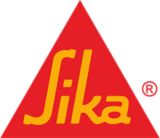Enhancing Value for our Customers through Sustainability
Sustainability in the construction industry not only aligns with global environmental goals but also delivers tangible benefits to Sika USA customers, encompassing cost savings, boosted marketability, enhanced well-being, and effective risk management.
Sustainability Reporting
The Sika Sustainability Report 2023 provides a comprehensive overview of the company’s sustainability performance across its six target areas and beyond. Simultaneously, it highlights the performance of its material topics, reflecting the sustainability impact and dependencies between Sika’s operations, products, solutions, and employees, suppliers, customers, communities, and the planet.
Sustainability in Region Americas
Conserving Today, Preserving Tomorrow. At Sika, our unwavering commitment lies in pioneering sustainable solutions and adopting a comprehensive approach as we steadfastly progress toward fulfilling our Net Zero pledge.
FAQ Sika US Sustainability
1) Environmental Sustainability: Focused on minimizing environmental impact, this type emphasizes conservation, renewable energy, and responsible resource management to preserve ecosystems and biodiversity.
2) Social Sustainability: Addressing societal well-being, social sustainability aims to create inclusive communities, promote social equity, and enhance the quality of life for all, fostering a sense of belonging and empowerment.
3) Economic Sustainability: Striving for financial resilience and prosperity, economic sustainability involves responsible business practices, fair trade, and the development of robust economies that meet current needs without compromising future generations.
4) Cultural Sustainability: Rooted in the preservation of cultural heritage, this type of sustainability recognizes the importance of traditions, languages, and customs, fostering a sense of identity and continuity for communities.
The primary goals of sustainability encompass a holistic approach to forge a balanced and resilient future for the planet and its inhabitants. This involves environmental conservation to safeguard ecosystems, biodiversity, and resources, social equity for inclusive and fair societies, economic prosperity fostering growth while minimizing negative impacts, resource efficiency promoting responsible resource use, cultural preservation recognizing diversity and heritage, climate action mitigating and adapting to change, and education for informed decision-making and positive change.
Patricia Heidtman – Chief Innovation and Sustainability Officer – Sika | LinkedIn.
ESG, which stands for Environmental, Social, and Governance, is a comprehensive framework used to assess a company's sustainability and ethical impact. Environmental factors evaluate a company's ecological practices, such as its carbon footprint and resource use. Social considerations focus on a company's relationships with its employees, communities, and broader societal impact. Governance examines the company's internal policies, leadership structure, and overall corporate behavior.

